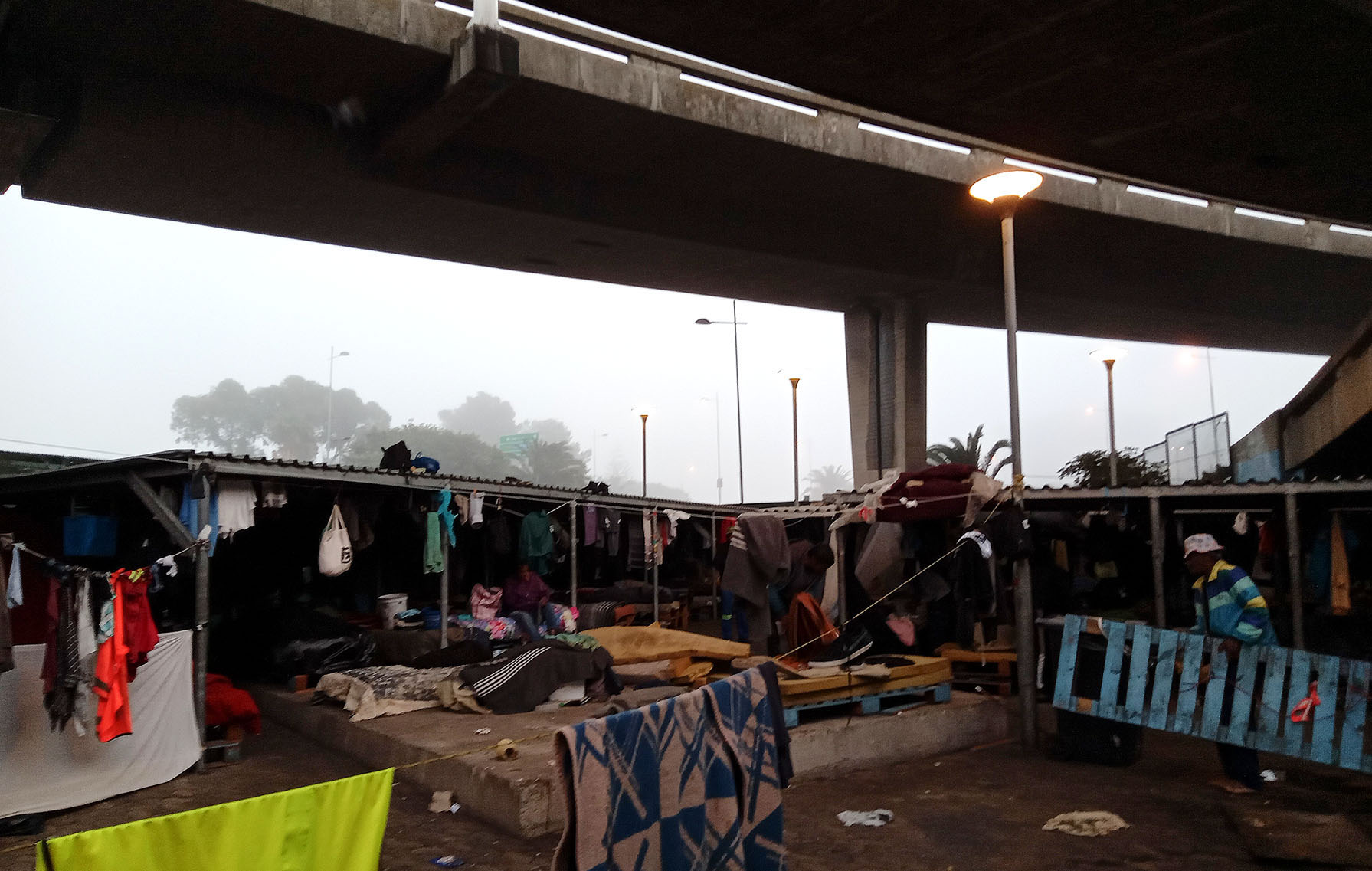Last month, Tamsin Meterlerkamp took to the streets of Cape Town to report on the homelessness crisis. More than 50,500 people have read the story, her accompanying video has been viewed 37,000 times and 1,600 people attended a webinar with Cape Town mayor Geordin Hill-Lewis, Nick Budlender and Nkosikhona Swartbooi.
The Daily Maverick Blog caught up with Tamsin to chat about how the story came about and what’s happened since its publication.
https://www.youtube.com/watch?v=giof5_eXiA8&t=5s
Tell us about how you started the research for this piece
I relied on first-hand accounts from individuals living in unhoused communities. Their stories illustrated the diverse factors leading to homelessness and revealed a noticeable rise in unhoused persons in the city. These narratives underscored how even those who seem financially secure can face sudden hardships, drawing attention to the increased risk of homelessness. Listening to these marginalised voices aimed to challenge harmful stereotypes and assumptions about homelessness.
How did you select the personal stories featured in the article?
I conducted in-depth interviews with three individuals from a shelter, focusing on their willingness to share their experiences. Inus Gouws’s story was particularly impactful for me. He was an IT specialist who lost his job during the pandemic, similar to my own experience. Despite his efforts, he faced severe trauma on the streets, making his story a poignant example of the unexpected challenges leading to homelessness.
Can you share some insights about the individuals or organisations you interviewed?
Initially, I spoke with Nkosinathi Sithole from the Socioeconomic Rights Institute, who was involved in advocating for unhoused residents facing eviction. He connected me with Richard Wildeman, an activist highlighting poor conditions at the Safe Space One shelter. Through Richard I met shelter residents including Matthew van der Merwe and Simon Raath. I also visited eviction sites, where I met people such as Inus Gouws, Fowler Felix and Miena Snico. Many were eager to share their concerns about the eviction.
 Tamsin Metelerkamp, Maverick Citizen journalist.
Tamsin Metelerkamp, Maverick Citizen journalist.
Were there any particularly challenging moments working on this story?
Hearing about the traumatic experiences of unhoused individuals was particularly challenging. Stories of violence, abuse and death were deeply distressing, revealing the harsh realities of life on the streets that were difficult to fully grasp.
What were some of the biggest challenges you encountered while researching this story?
Weather conditions were severe, with rain causing logistical issues. I spent a lot of time walking up and down in the rain with a black bag lining my backpack to keep everything dry(ish).
Many interviewees lacked phones, which complicated the follow-up. If I wanted to follow up with them I needed to find them.
Initially, I couldn’t enter Safe Space One, relying on external observations and resident-shared media. Permission to enter was granted only after the article was published, with restrictions on photos and interviews.
What kind of feedback have you received since the article was published?
Following publication there were reports of improved sanitation at the shelter. Megan Pangeni from the City’s Community, Arts and Culture Development Department said plans for site upgrades would now include prefabricated buildings.
Are there specific responses that surprised you?
Two people reached out, offering to help Inus Gouws. One of them accompanied me to meet Inus last week and has offered to help him upgrade his CV and look for work. While no concrete outcomes have emerged yet, it was encouraging to see people eager to make a positive difference.
Did the process of writing this story change your perspective on homelessness or economic insecurity?
The article reinforced my belief that homelessness is a complex issue influenced by factors often beyond personal control. Engaging directly with those who have lost everything emphasised how close we all are to financial instability and underscored the need for empathy and understanding. It also prompted me, colleagues and friends to rethink our financial security and discuss ways to better protect ourselves against unforeseen events. It highlights that even with careful planning we can face severe hardships, emphasising the need for compassionate responses and robust social safety nets.
What stories are you working on next?
The issues I’d like to tackle include:
- The experience of growing up on the street. Some people I spoke to had been living that way since their teens. Their experience seemed to be very different from those who had homes for longer and then lost them. I also saw a number of children living in encampments on the street and would like to understand more about how families manage that;
- The value of the Expanded Public Works Programme in helping unhoused persons get back on their feet. Some people I spoke to felt the system was quite exploitative, as it involved payment well below minimum wage (such as R145 for eight hours’ work);
- More on shelters. I’d like to spend time looking into which shelter models work well and how they can be emulated elsewhere; and
- Social housing in Cape Town. DM




 Tamsin Metelerkamp, Maverick Citizen journalist.
Tamsin Metelerkamp, Maverick Citizen journalist. 